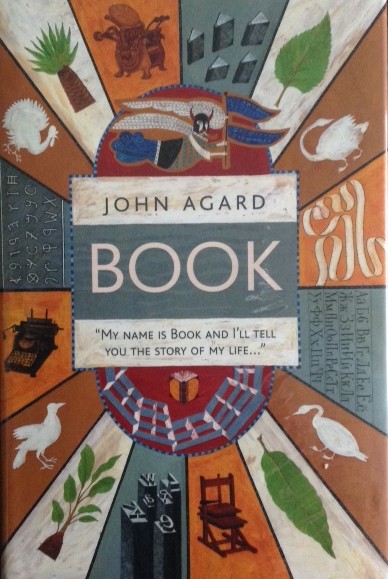Inspiring Young Readers
 posted on 28 Oct 2021
posted on 28 Oct 2021
Book by John Agard, illustrated by Neil Packer
My guess is that you’re most likely to find this book shelved in the children’s section – and I can see why; it would probably suit good readers aged ten and over. But the ‘over’ bit is an important qualifier here because its more accurate to describe this book as ideal for anyone over ten.
That’s partly about content and partly about style. At one level this is a playful, audacious even, prose ‘autobiography’ by the spirit and essence of the book as an artefact in its own right, but it can be read – in large chunks at least – as an extended prose poem in praise of the book as a cultural icon.
Younger readers will find that Book is an engaging character who wants to tell his story from the very beginning – or to be accurate as (s)he himself says – from a time before the beginning when there were no books and storytelling was all about the oral traditions. And then, from clay tablets right through to digital screens we’re taken on Book’s developmental journey.
But, thankfully, this isn’t a journey to extinction but to a life of multiple identities – a world in which the physical, paper book will continue to flourish side by side with its various digital cousins.
It’s a story skilfully and often lyrically told. The voice of Book is idiosyncratic and unexpected and is imbued with the unorthodox spirit of the author. British-Guyanese poet Agard is a brilliant communicator and has written extensively for both younger and adult readers and here, taking on the character of Book, he finds himself taking some really lovely flights of imagination, in a language that sings. In this example Book is talking to the ebook and explaining why his physical reality is part of the reading experience:
“And I told eBook about Roman times, when my vellum smelt of saffron, and Victorian times, when my paper smelt of pressed lavender and rose petals.
…I let eBook know in no uncertain terms that my old musty smell is a heart-warming perfume to the nose of book lovers rummaging in second-hand shops, car boot sales, charity shops and what have you.”
Throughout the text Agard sprinkles bookish quotations from other writers that give another angle on the subject matter of the section he’s writing. The quotes are boxed, decorated and sometimes fill a full page or even more and many of them are well known but still always delightful. The decoration of these quotations and the sprinkling of other illustrations throughout the book are provided by Neil Packer, a well-established book illustrator. You can click on this link and see Packer’s own website which has examples of the design of the book as it went through its evolution.
Hardback copies of this book can be found online for very little – you can pay as little as £5 for one – and I think it’s an absolute bargain.
Terry Potter
October 2021